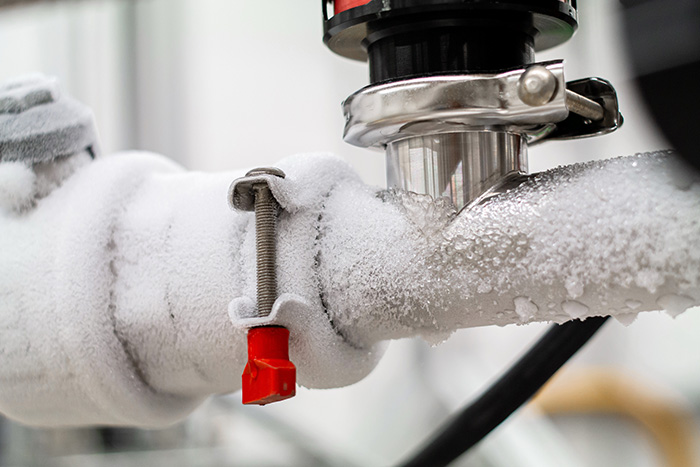What are your opinions on How to prepare your home plumbing for winter weather?

Winter can wreak havoc on your pipes, particularly by freezing pipes. Below's how to stop it from happening and what to do if it does.
Introduction
As temperature levels decrease, the risk of icy pipes rises, potentially bring about expensive repairs and water damage. Recognizing exactly how to stop frozen pipelines is crucial for property owners in cool climates.
Avoidance Tips
Shielding vulnerable pipes
Wrap pipelines in insulation sleeves or utilize warmth tape to shield them from freezing temperature levels. Focus on pipes in unheated or exterior locations of the home.
Home heating strategies
Maintain interior spaces effectively heated up, particularly locations with pipes. Open cabinet doors to permit cozy air to distribute around pipelines under sinks.
Exactly how to identify icy pipelines
Search for decreased water flow from taps, uncommon odors or sounds from pipes, and visible frost on revealed pipes.
Long-Term Solutions
Architectural modifications
Take into consideration rerouting pipes far from outside walls or unheated locations. Include extra insulation to attics, cellars, and crawl spaces.
Updating insulation
Invest in high-quality insulation for pipes, attics, and walls. Correct insulation helps preserve constant temperature levels and lowers the threat of icy pipelines.
Protecting Outside Plumbing
Garden hoses and exterior faucets
Separate and drain yard tubes before wintertime. Mount frost-proof spigots or cover outdoor faucets with protected caps.
Recognizing Icy Pipes
What causes pipes to freeze?
Pipelines ice up when revealed to temperatures below 32 ° F (0 ° C) for extended periods. As water inside the pipes ices up, it broadens, taxing the pipe walls and possibly causing them to rupture.
Risks and problems
Frozen pipelines can result in water disruptions, residential property damages, and expensive repair work. Burst pipes can flooding homes and create substantial architectural damage.
Signs of Frozen Pipes
Identifying icy pipes early can stop them from bursting.
What to Do If Your Pipes Freeze
Immediate activities to take
If you think frozen pipes, keep faucets open to alleviate stress as the ice thaws. Make use of a hairdryer or towels soaked in hot water to thaw pipes slowly.
Conclusion
Avoiding frozen pipes requires aggressive measures and fast responses. By comprehending the reasons, signs, and preventive measures, property owners can shield their pipes during winter.
5 Ways to Prevent Frozen Pipes
Drain Outdoor Faucets and Disconnect Hoses
First, close the shut-off valve that controls the flow of water in the pipe to your outdoor faucet. Then, head outside to disconnect and drain your hose and open the outdoor faucet to allow the water to completely drain out of the line. Turn off the faucet when done. Finally, head back to the shut-off valve and drain the remaining water inside the pipe into a bucket or container. Additionally, if you have a home irrigation system, you should consider hiring an expert to clear the system of water each year.
Insulate Pipes
One of the best and most cost-effective methods for preventing frozen water pipes is to wrap your pipes with insulation. This is especially important for areas in your home that aren’t exposed to heat, such as an attic. We suggest using foam sleeves, which can typically be found at your local hardware store.
Keep Heat Running at 65
Your pipes are located inside your walls, and the temperature there is much colder than the rest of the house. To prevent your pipes from freezing, The Insurance Information Institute suggests that you keep your home heated to at least 65 degrees, even when traveling. You may want to invest in smart devices that can keep an eye on the temperature in your home while you’re away.
Leave Water Dripping
Moving water — even a small trickle — can prevent ice from forming inside your pipes. When freezing temps are imminent, start a drip of water from all faucets that serve exposed pipes. Leaving a few faucets running will also help relieve pressure inside the pipes and help prevent a rupture if the water inside freezes.
Open Cupboard Doors
Warm your kitchen and bathroom pipes by opening cupboards and vanities. You should also leave your interior doors ajar to help warm air circulate evenly throughout your home.

I recently found that content about Winter Plumbing Precautions: Preventing Frozen Pipes when browsing on the internet. Enjoyed our blog? Please quickly share it. Let others locate it. Thanks for being here. Come back soon.
Go Deal